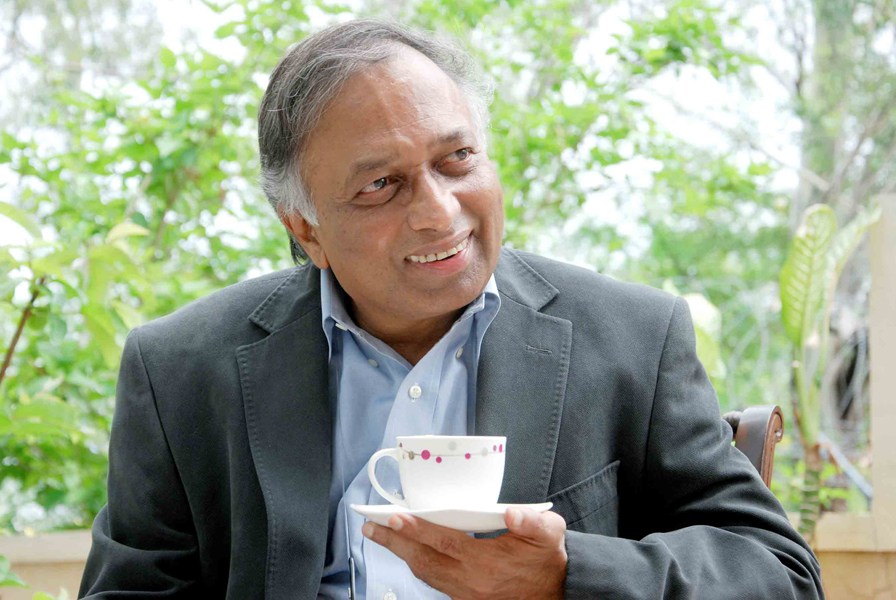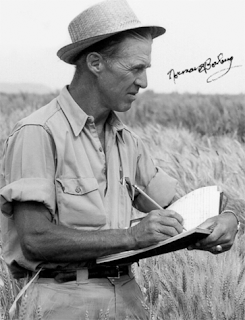I SAW IT HAPPENING 1947 -2019 -SO I WROTE THIS BLOG=can call this a first hand or ring side or live unfolding of events "
................................................................................................................
HOW INDIA PROGRESSED FROM ONE AMONG THE POOREST 10 NATIONS TO ONE AMONG
THE RICHEST 10 NATIONS IN 50 YEARS TIME ;AND NOW AIMING TO BE THE FIRST
NATION OF THE WORLD IN ANOTHER 50 YEARS OF TIME
-When India gained its independence after a long period of subjugation, its land and people were a picture of distress, removed from great events of its past glory and splendor.
. Common man, burdened by poverty, hunger and ignorance, had lost the will to exercise its productive might.
Out of the dust, they had to be raised by men of great vision, like Gandhi and Nehru. In his memorable speech, delivered to the Constituent Assembly on 14th. August, 1947, Nehru said : "The future is not all of ease and resting, but of incessant striving…"
India was a stagnant economy at the time of independence.
The economy was predominantly agrarian with little industrial development. Most people lived in villages, in hunger and despair. Bullock carts, wooden ploughs,
spinning wheels and thatched huts - life made of small things, unimaginatively hard, dull and cruel.
Agricultural growth was around 0.3% per annum in the first half of this century.
The colonial government took little interest in the improvement of cultivation practices, except in the case of export crops like cotton, jute and tea.
The railway system was built only for connecting the ports with the export production centres and the import markets; all other infrastructural facilities were lacking.
https://youtu.be/MwpaXBguDlw?t=128=Trains till 1975'S
Vallabhbhai patel got his first opportunity to utilize Gandhiji's philosophy of satyagraha in 1918 for the farmers of Kaira who had lost their crops to heavy rains and floods that year. The government disregarded the farmers' misery and insisted on collecting land revenue. Vallabhbhai organized the No Tax campaign on peaceful, Gandhian lines. The government held out and began confiscating land and what little crops and cattle the farmers still had. Vallabhbhai, now decked in a dhoti, kurta and cap urged the farmers not to buckle. The government eventually relented and returned the confiscated property. This was the first victory of satyagraha for Vallabhbhai. He was jubilant.
In 1928, Vallabhbhai patel once again came to the rescue of the farmers, this time it was in Bardoli, which was then a part of Surat district. The Government increased the tax on the land. Vallabhbhai urged the farmers not to pay, declaring the hike unjust. He prepared the farmers for satyagraha. The farmers refused to pay the tax hike. In retaliation, the Government confiscated their land, cattle and crops and arrested hundreds of farmers. There was a mass exodus from Bardoli to escape the Government's atrocities. The farmers that remained continued the satyagraha.
Vallabhbhai told the farmers not to sell milk, vegetables and necessities to any person unless they produced a chit assigned by the local satyagraha committee. The "peaceful" war raged for six months. Finally Vithalbhai, Vallabhbhai's brother, who was President of the Central Legislative Assembly, brokered a comprise. The Government agreed to hold an inquiry into the justification of the tax hike, released the satyagrahis and returned all confiscated items back to the farmers. So pleased was Gandhiji with Vallabhbhai's effort that he gave him the title of "Sardar" or leader.
Local enterprise was confined largely to trade and commerce, mainly in and around port cities like Bombay, Calcutta and Madras.
A few industrial centres grew around these cities through private entrepreneurship.
There had been an adverse impact on the artisan sector under British rule.
The old crafts were left to languish and decay - ill prepared to modernise.
Large factories, few in number, produced mainly consumer goods, like textiles
Intermediates like steel, cement and jute machinery were mostly imported.
The extremely narrow base of industrialisation remained confined to a very few cities and states and was the monopoly of a few privileged families.
The export strategy was not conducive to the country's interests.
Exports were seen as a mechanism to transfer raw materials cheaply to the metropolitan cities in the United Kingdom, which, in turn, processed them into final goods for exporting back to the colonies.
--------------------------------------------------------------------------------------
INDIA -THE BRITISH LEGACY
Only after India became free in August 1947 railways came to be nationalised.
India's industrial output was 25% of worlds industrial output in 1770 AD. When British left after 200 years of various form of rule India had 0.1% of worlds industrial output 2) Literacy was left at 13% and 3) Average life expectancy of Indians was brought to measly 37 years
AGRICULTURE WAS TAXED VERY HEAVY:-LEADING TO BARDOLI AGITATION UNDER SARDAR PATEL AND MAHATMA GANDHI :-Patel a brilliant lawyer proved to be an excellent organizer. He instructed the peasants not to pay a twenty-two percent increase in taxes levied by the British Government.
British thought of increasing tax for agriculturists as there was nothing else to tax!! no industry;nothing else to tax after 200 years of loot rule
Bardoli Satyagraha - Wikipedia, the free encyclopediahttps://en.wikipedia.org/wiki/Bardoli_SatyagrahaThe Bardoli Satyagraha of 1928,
India hardly had any large-scale industry in 1947, which could process the raw-material into finished usable goods. There were a few industries in the cotton, jute, sugar, matches, and steel sectors, etc. - but they were too few to really service the country's needs. About 65-70% of India's less-than-Rs.600cr export consisted of raw material (cotton, oilseeds, minerals and ores, tobacco, etc.); around the same proportion of its imports were finished goods (ranging from biscuits, sewing needles, cloth etc., to dress-material, medicines to machines-tools). In fact, even in 1950, India was importing 90% of its requirement of machine tools.
Indian Railways – The British Legacy
But what about the railways ...?' The ...theguardian.com
How British colonialism killed 100 million Indians in 40 years



www.youtube.com/watch?v=uFHnRn8yCek
Our tragedy was that, unlike South Korea and Taiwan, which foresaw the importance of Track-I reforms as early as the late 1950s and early 1960s, we went in the opposite direction and progressively slid into a command and control system. The result was slow growth as well as slow progress in education and health.
But when we eventually accepted the lesson of history beginning in 1991, the results were spectacular: growth accelerated and social spending rose as well.
-----------------------------------------------------------------------------------------------------------------------------------
On Nov. 26th 1947, RK Shanmukham Chetty, India’s first Finance Minister presented the first budget. It covered only 7 and half months from Aug 15th the day of Independence to March 31, 1948. Though New Delhi could have authorized the expenditure for the part of the financial year, a budget was indeed presented in the Parliament and approved. Understand that the Budget Estimate for total revenues was Rs 171.15 crore; of which notably, Rs 15.9 crore was to come from the Posts and Telegraphs Department. It was to be a deficit budget of 26.24 crores. The first budget of the Republic of India was presented by John Mathai on Feb 28, 1950. This budget laid down the roadmap for the creation of the Planning Commission. The Commission was entrusted with the responsibility of formulating phased plans for effective and balanced use of resources. .
3 OCCASION WHEN INDIA DIDN'T HAVE MONEY TO PAY
The Messy Partition of the Reserve Bank of India - The Wire
====================================
2-WHEN INDIAN P.M. SHASTRI HAD TO BORROW MONEY FROM KING OF HYDERABAD
The devious case of the Nizam's fund- The New Indian Express
===========================================
WHEN POOR INDIA 1958- COULD NOT AFFORD TO BUY MACHINES
Synopsis : Conceived primarily as a measure of flood protection, the HirakudProject is a momentous step forward in bringing ...9:32 Now playing Hirakud dam construction, 1958 from India, Matri Bhumi by Roberto Rossellini
ALL THE TRUCKS AND HEAVY EQUIPMENT USED AT HIRAKUD DAM WAS DONATED BY AMERICAN ARMY STATIONED IN INDIA 1943 TO 1945 TO FIGHT JAPAN ;AFTER SECOND WORLD WAR END WHEN THEY LEFT INDIA.601K views 10 years ago
ALL THE TRUCKS AND HEAVY EQUIPMENT USED AT HIRAKUD DAM WAS DONATED BY AMERICAN ARMY STATIONED IN INDIA 1943 TO 1945 TO FIGHT JAPAN ;AFTER SECOND WORLD WAR END WHEN THEY LEFT INDIA.
3-
3-
From 5 To 500: India's Forex Reserves Journey Since 1991
{ IN 1947 IF ONE WANTED TO BUY ESSENTIALS LIKE PENCIL ,PEN OR CUPS AND PLATES IT WAS MOSTLY FOREIGN MADE AVAILABLE .
| Sheffield plates-made in england |
WHILE PENS WERE MADE IN U.S.A. --'SWAN' PENS.
CUP AND PLATES-MOSTLY ENGLISH MADE WERE AVAILABLE AT THE CORNER STORE .ALL MEDICINES WERE IMPORTED.
How India taught herself to make good pens and inkNOV 25 ,2021
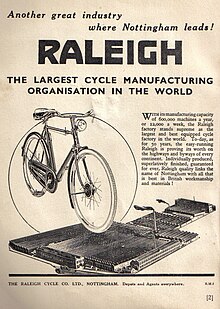 Raleigh advert from 1940.
Raleigh advert from 1940.WERE IMPORTED [EXCEPT INDIAN MADE BULLOCK CARTS !].EVEN PINS AND SAFETY PINS
 this
song made at that time shows it all;shoe from japan,dress from england
;hat from russi(Russia);Then imports were cut down drastically and MAKE IN INDIA was made the policy
this
song made at that time shows it all;shoe from japan,dress from england
;hat from russi(Russia);Then imports were cut down drastically and MAKE IN INDIA was made the policy
Mera Joota Hai Japani (HD) - Raj Kapoor Evergreen Hit Karaoke Song - Shree 420 - Mukesh Hits
 AND
NAMED IT HINDUSTAN IN 1951
AND
NAMED IT HINDUSTAN IN 1951| 1951 HINDUSTAN CAR{ IMPORTED FROM ENGLAND AS 'MORRIS' AND RENAMED 'HINDUSTAN'} | [THE FIRST CAR "MADE"IN INDIA] |
AND 'AMBASSADOR'
Morris Motors joint venture
;IT WAS AN EVENT AS UNBELIEVABLE AS MAN'S FIRST FLIGHT TO MOON!!THE PRICE OF A NEW HINDUSTAN CAR WAS 8500/RUPEES[ABOUT $130] BUT MOST COULD NOT AFFORD TO BUY IT [SALARY OF A PEON 50-100RS;LOWER CLERK 100-300 ;UPPER CLERK 200 500 ;AND HIGHER OFFICERS 500 TO 1000/MONTH];I.C.S(LATER NAMED I.A.S) OFFICER SALARY WAS 5000/AND UPWARDS [never heard of corruption among I.C.S. officers and higher echelon officers then; as opposed to the present condition in INDIA]
first bus bodies Made in India 1949
vehicles,carts India 1900 ...
Social indicators were equally poor;
illiteracy was as high as 84%;
public health services were inadequate to face even epidemics such as influenza, malaria and cholera. Some efforts were made by the state to prevent epidemics like malaria which continued to revisit again and again.
The mortality rate remained high at around 27 per thousand in 1947. Children cried for milk but mothers could not feed them. Famines devastated human lives, adding to the interminable misery in a barren wasteland.
IT WAS COMMON THOSE DAYS TO SEE ;STARVING PEOPLE
The first task of the Indian Government, in the immediate post-independence period, was to improve the material and human conditions of life by motivating rapid growth in a stagnant economy and to set the country on a path for higher growth with social justice
India initiated planning for national economic development with the establishment of the Planning Commission, in 1950.
The aim of the First Five Year Plan (1950-56) was to raise domestic savings for growth and help the economy resurrect itself from the twisted wreckage cause by colonial exploitation and the aftermath of Partition
The real break with the past in planning came with the Second Five Year Plan, celebrated as the Nehru-Mahalanobis Plan).
The industrialisation strategy, articulated by Professor Mahalanobis, placed emphasis on the development of heavy industries and envisaged a dominant role for the public sector in the economy. The entrepreneurial role of the state was evoked to develop the industrial sector.
Commanding heights of economy were entrusted to the public sector.because except TATA & BIRLA and few Maharajs there was nobody rich in India and the only rich country in 1947(after 6 years of world war)=U.S.A. was busy repairing war damaged Europe{
The Marshall Plan: Definition, Date & Cold War - HISTORY
Korean War - Wikipedia
In brief, the emphasis of the first three Five Year Plans,
.
first 5 Year Plan in India (1951 – 56){TOTAL AMOUNT ALLOTED 2400 CRORE RUPEES}
in 1950. The aim of the First Five Year Plan (1950-56) was to raise domestic savings for growth and help the economy resurrect itself from the twisted wreckage cause by colonial exploitation and the aftermath of Partition.
- It was based on Harrod – Domar Model.
- Community Development Program was launched in 1952.
- Two – fold objectives were there :
- To correct the disequilibrium in the economy caused by 3 main problems – influx of refugees, severe food shortage and mounting inflation.
- To initiate a process of all – round balanced development to ensure a rising national income and a steady improvement in living standards.
- Emphasized on Agriculture, Price Stability, Power and Transport.
- It was more than a success, because of good harvests in the last two Years.
The real break with the past in planning came with the Second Five Year Plan, celebrated as the Nehru-Mahalanobis Plan). The industrialisation strategy, articulated by Professor Mahalanobis, placed emphasis on the development of heavy industries and envisaged a dominant role for the public sector in the economy. The entrepreneurial role of the state was evoked to develop the industrial sector. Commanding heights of economy were entrusted to the public sector.
- Also called ‘Mahalanobis Plan’ after its chief architect PC Mahalanobis. It was based on 1928 Soviet Model of Feldman.
- Its emphasis was on economic stability. Agriculture target fixed in the first plan was almost achieved. Consequently, the agriculture sector got low priority in the second five Year plan.
- Its objective was Rapid Industrialization, particularly basic and heavy industries such as iron and steel, heavy chemicals like nitrogenous fertilizers, heavy engineering and machine building industry.
- Besides, the Industrial Policy of 1956 emphasized the role of Public Sector and accepted the establishment of a socialistic pattern of the society as the goal of economic policy.
- Advocated huge imports which led to emptying of funds leading to
foreign loans. It shifted basic emphasis from agriculture to industry
far too soon. During this plan, price level increased by 30%, against a
decline of 13% during the First Plan.Hindustan Aircraft Factory, Bangalore ...Product
Here is the collection of some of the photos of Goa during pre-liberation days. Photos shows the Portuguese troops, their trainings, preparation to fight against the Indian army, freedom movement and demonstration by Goan Freedom fighters and Goan Satyagrahis.
| Portuguese army in Goa arresting indian freedom fighters 1960s |
1961 Indian annexation of Goa:-http://en.wikipedia.org/wiki/1961_Indian_annexation_of_Goa
Brigadier Sagat Singh of India's Maroon Beret Parachute regiment accepts the surrender of Portuguese forces at a military camp in Bambolim.
1961Enthusiastic Goans cheering the victorious Indian soldiers at the conclusion of the war.
The longest reigning colonial power, the Portuguese had held Goa for 451 years until India wrested it back on December 19, 1961.
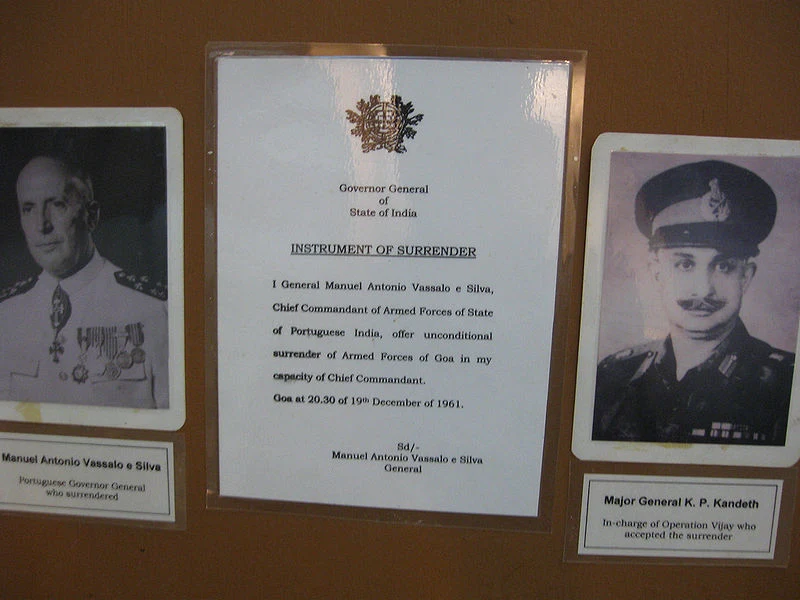
Dr. Vikram Ambalal Sarabhai (1963-1971) - ISRO
BARC activities for Indian Nuclear Power Program
========================
Third Five Year Plan in India (1961 – 66){TOTAL AMOUNT ALLOTTED ABOUT 10000 CRORE RUPEES}
- At its conception time, it was felt that Indian economy has entered a take – off stage. Therefore, its aim was to make India a ‘Self – Reliant’ and ‘Self – Generating’ Economy.
- Also, it was realized from the experience of first two plans that agriculture should be given the top priority to suffice the requirements of export and industry.
- The other objectives of the plan included the expansion of basic industries, optimum utilisation of country’s Labor power and reducing the inequalities of income and wealth.
- Relied heavily on foreign aid (IMF).
- Complete failure due to unforeseen misfortunes, :----
- [1] Chinese aggression (1962):------
| Indian Chinese war 1962 |
http://en.wikipedia.org/wiki/Sino-Indian_War
http://maddy06.blogspot.com/2008/03/lynching-of-krishna-menon.html
Nehru, the architect of the Hindi-Chini bhai bhai festivity, had gone out of his way to propitiate communist China, accepting even the Chinese annexation of Tibet in a 1954 agreement without settling the Indo-Tibetan border. While Nehru thought he had bought peace with China by accepting Chinese rule over Tibet on the basis of his doctrine of panchshila, or the five principles of peaceful co-existence, Mao and his team read this both as a sign of India’s weakness and a licence to encroach on strategically important areas of Ladakh.
It was a war between China and India that occurred in 1962. A disputed Himalayan border was the main pretext for war, but other issues played a role. There had been a series of violent border incidents after the 1959 Tibetan uprising, when India had granted asylum to the Dalai Lama. India initiated a Forward Policy in which it placed outposts along the border, including several north of the McMahon Line, the eastern portion of a Line of Actual Control proclaimed by Chinese Premier Zhou Enlai in 1959.
- The Chinese launched simultaneous offensives in Ladakh and across the McMahon Line on 20 October 1962, coinciding with the Cuban Missile Crisis. Chinese troops advanced over Indian forces in both theatres, capturing Rezang la in Chushul in the western theatre, as well as Tawang in the eastern theatre. The war ended when the Chinese declared a ceasefire on 20 November 1962, and simultaneously announced its withdrawal from the disputed area.
The Sino-Indian War is notable for the harsh conditions under which much of the fighting took place, entailling large-scale combat at altitudes of over 4,250 metres (14,000 feet). This presented enormous logistics problems for both sides. The Sino-Indian War was also noted for the non-deployment of the navy or air force by either the Chinese and Indian sides.
| Kennedy |
- No sooner the PLA began the first wave of assaults than an unnerved Nehru appealed to the United States for military help. He implored that Washington grant military aid without insisting on a formal alliance. But no U.S. military aid came. Kennedy waited till Khrushchev's capitulation(at cuba over russian missiles) before sending Nehru a letter promising "support as well as sympathy".
When the PLA launched the second series of attacks, the U.S. carrier force, USS Enterprise,The Untold Story: How US came to India's aid in 1962 - Rediff ...
www.rediff.com › news › special › the-untold-story-ho...Dec 4, 2012 — The story of the 1962 war with China has all the elements of a ... of the USS Enterprise in the Bay of Bengal during the 1971 Bangladesh war. ... US that came to India's rescue and there were plans to send the USS Kitty Hawk ...Gunboat diplomacy: In '71 US tried to threaten India, now it's ...
timesofindia.indiatimes.com › india › articleshowJul 21, 2020 — Currently the world's largest aircraft carrier, Nimitz sailed into the Bay of ... Expressing concern about the continued military aggression by China along its border with India and in other ... led by USS Enterprise,USS Enterprise (CVN-65) - Wikipediaen.wikipedia.org
- steamed not towards the East or South China Sea but towards the Bay of Bengal to serve as a psychological prop to the besieged Indians. John Kenneth Galbraith wrote in his memoirs, Ambassador's Journal, that he had, as U.S. Ambassador to India, recommended the despatch of the aircraft carrier to ease Indian nerves.
- http://www.reversespins.com/fortyyears.html
US demand Once Beijing declared a unilateral cease-fire, the issue of U.S. arms sales to India got caught in the perennial and still-prevalent U.S. demand - that New Delhi open talks with Pakistan on Kashmir - forcing the Nehru government to hold five rounds of futile discussions with Islamabad as a quid pro quo for receiving low-line American arms. The Chinese aggression was seen in Washington as creating an opportunity for what America has always desired and still seeks to pursue -- closer and better ties with India while maintaining old bonds with Pakistan - to help promote 'regional stability'.
- [2]---, Indo – Pak war (1965),:--
- The Indo-Pakistani War of 1965 was a culmination of skirmishes that took place between April 1965 and September 1965 between India and Pakistan. This conflict became known as the Second Kashmir War fought by India and Pakistan over the disputed region of Kashmir, the first having been fought in 1947. The war began following Pakistan's Operation Gibraltar, which was designed to infiltrate forces into Jammu and Kashmir to precipitate an insurgency against rule by India. The five-week war caused thousands of casualties on both sides. It ended in a United Nations (UN) mandated ceasefire and the subsequent issuance of the Tashkent Declaration.
The Pakistan Army's elite 1 Armoured Corps met its Waterloo in the Battle of Assal Uttar as they lost nearly 100 tanks, many of them being brand new M-48 Pattons. Bhikiwind was used as a temporary tank cemetery to house some 60 captured & destroyed M-48 Pattons, M-24 Chafees and M4 Shermans. The cemetery stood as a standing memorial to Pakistan's humiliating defeat in the battle of Assal Uttar.
| General Ayub Khan |
- http://en.wikipedia.org/wiki/Indo-Pakistani_War_of_1965:-- under the leadership of General Ayub Khan,
- believed the Indian Army would be unable to defend itself against a quick military campaign in the disputed territory of Kashmir as the Indian military had suffered a loss to China in 1962.Pakistan believed that the population of Kashmir was generally discontented with Indian rule and that a resistance movement could be ignited by a few infiltrating saboteurs. Pakistan attempted to ignite the resistance movement by means of a covert infiltration, codenamed Operation Gibraltar The Pakistani infiltrators were soon discovered,
-
- however, their presence reported by local Kashmiris, and the operation ended in a complete failure
-
- [3]--- severest drought in 100 Years (1965 – 66).:--
- http://pazhayathu.blogspot.com/2009/09/united-states-is-not-dirty-word-in.html
- u.s.a. came to our rescue:-1.1K views 13 years agoPhoto and audio clip of President Eisenhower at the signing of the 1960 Food for Peace agreement between the United States ...6.3K views 4 years agoIn the mid of 1966 the prime minister MRS. Indira Gandhi visited United States of America and requested president Johnson to ...
Public Law 480:
https://merip.org › 1987/03 › public-law-480-better-tha...During the late 1950s and early 1960s, the value of PL 480 reached one-third of total US agricultural exports. Today, food aid constitutes less than five ...


 PL-480,
or Public Law 480 is a law signed by President Eisenhower in 1954. It
is also known as "Food for Peace" because it is the funding avenue by
which US food can be used for overseas aid.
PL-480,
or Public Law 480 is a law signed by President Eisenhower in 1954. It
is also known as "Food for Peace" because it is the funding avenue by
which US food can be used for overseas aid.
between the United States and India. The agreement not only sent rice and wheat but helped to establish food reserves in India
Statistical Overview
- The American who helped India conquer hunger:----
Borlaug first visited India in 1963. His HYV seed Leema Rojo was the most successful variety that increased the yield of wheat in Punjab manifold.
"The high-yielding variety was reddish-brown and did not find favour with a lot of people. Under Borlaug's guidance, Punjab Agricultural University (PAU) professor Kalyan Singh crossbred it with Indian varieties and evolved a new type called Kalyan.
This became highly successful," former PAU Vice-Chancellor K.S. Aulukh told HT. The Green Revolution, which first took place in Punjab, spread rapidly to other parts of India. As a result, the country achieved self-sufficiency in food production by the early 1990s.
- Prices increased by 36% in 5 – Years.Hence, third plan failed in every respect.
- Plan holiday for 3 Years.
- The prevailing crisis in agriculture and serious food shortage necessitated the emphasis on agriculture during the Annual Plans.
- During these plans a whole new agricultural strategy involving wide – spread distribution of High – Yielding Varieties (HYVs) of seeds, the extensive use of fertilizers, exploitation of irrigation potential and soil conservation was put into action to tide – over the crisis in agricultural production.
- During the Annual Plans, the economy basically absorbed the shocks given during the Third Plan, making way for a planned growth.
- M. S. Swaminathan transformed agriculture in India in the 1960s
- Swaminathan
is credited with introducing new varieties of high-yield wheat to India
during the 1960s and 1970s, catapulting the country from dependence on
foreign-grain shipments to food independence within a few years. With
about 60% of India's population employed in agriculture, it is difficult
to overstate the significance of Swaminathan's contribution to his
country.

Fourth Five Year Plan India (1969 – 74)
- The Fourth Plan set before itself the two principal objectives – growth with stability and progress towards self – reliance.
- Main emphasis on agriculture’s growth rate so that a chain reaction can start.
- Fared well in the first 2 Years with record production, last 3 Years failure because of poor monsoon.
- Had to tackle the influx of Bangladeshi refugees before and after 1971 Indo – Pak war.
| Soviet Navy dispatched two groups of ships |
ALL YOU TUBE VIDEOS ARE NOW REMOVED BY ?AMERICAN AND BRITISH HACKERS THINKING PEOPLE WILL FORGET THAT EPISODE;THIS BELOW VIDEOS FROM FACE BOOK
Watch How Russia Helped India In... - Say "No" To Sold Media
y. Indo-Pakistani conflict and about the Soviet-American opposition in Indian Ocean. It's a part of the Russian TV program 'Strike Force'. The translation is mine. In 1971, December, 3 the World has become an attestor to a new war between India and Pakistan. At afternoon the Pakistani aviation has strike the Indian cities and airstrips. The Indian PM Indira Gandhi put the country in emergency state and gave the order to nip the aggression. Hard clashes were started on the ground in the air, and at the sea. Historic document: "Confident. December, 10, 1971. Moscow. For the DM Marshal Andrey Grechko. According to the information from our attaché in Delhi in the first day of conflict the Indian destroyer 'Rajput' has sunk a Pakistani submarine by depth charges. In December, 4 and 9, the Indian fast boats have destroyed and damaged 10 Pakistani battle ships and vessels by the P-15 missiles. In addition 12 oil storages was burned in flame. The Commander of the Military Intelligence Service Gen. Pyotr Ivashutin". In the same day the Soviet Intelligence has reported that the British Naval group with the leadership of 'Eagle' carrier went closer to the territorial waters of India. The Soviet Government immediately sent a unit of battle ships under the leadership of counter-admiral Vladimir Kruglyakov for helping to the fraternal country. Vladimir Kruglyakov, the former (1970-1975) Commander of the 10th Operative Battle Group (Pacific Fleet) remembers: "I received the order from the Chief Commander 'To not allow access of the American Navy to the Indian military objects'. - On the way of American Navy stood the Soviet cruisers, destroyers and atomic submarines equipped with anti-ship missiles. Vladimir Kruglyakov, the former (1970-1975) Commander of the 10th Operative Battle Group (Pacific Fleet) remembers: "We encircled them and I have targeted the 'Enterprise' by missiles. I have blocked them and didnt allow enclosing to Karachi, nor to Chittagong or Dhaka". On the Soviet ships then were only the missiles with limited to 300 km range. Thus, to be sure the rival is under the hindsight the Russian commanders have had to take the risk of maximal enclosing to the American fleet. Vladimir Kruglyakov, the former (1970-1975) Commander of the 10th Operative Battle Group (Pacific Fleet) remembers: "The Chief Commander has order me: 'Lift the subs when they (the Americans) appear!' It was done to demonstrate, there are all the needed in Indian Ocean, including the nuclear submarines. I have lifted them, and they recognized it. Then, we intercepted the American communication. The commander of the Carrier Battle Group was then the counter-admiral Dimon Gordon. He sent the report to the 7th American Fleet Commander: 'Sir, we are too late. There are the Russian atomic submarines here, and a big collection of the battleships'. The war was then two weeks long, and it has finished by Pakistani forces surrendering.
USA's Seventh Fleet's Attempt to enter the Bay of Bengal and ...
Vladimir Kruglyakov, the former (1970-1975) Commander of the 10th Operative Battle Group (Pacific Fleet) remembers:
"I received the order from the Chief Commander 'To not allow access of the American Navy to the Indian military objects'.
- On the way of American Navy stood the Soviet cruisers, destroyers and atomic submarines equipped with anti-ship missiles.
Vladimir Kruglyakov, the former (1970-1975) Commander of the 10th Operative Battle Group (Pacific Fleet) remembers:
"We encircled them and I have targeted the 'Enterprise' by missiles. I have blocked them and didnt allow enclosing to Karachi, nor to Chittagong or Dhaka".
On the Soviet ships then were only the missiles with limited to 300 km range. Thus, to be sure the rival is under the hindsight the Russian commanders have had to take the risk of maximal enclosing to the American fleet.
Vladimir Kruglyakov, the former (1970-1975) Commander of the 10th Operative Battle Group (Pacific Fleet) remembers:
"The Chief Commander has order me: 'Lift the subs when they (the Americans) appear!' It was done to demonstrate, there are all the needed in Indian Ocean, including the nuclear submarines. I have lifted them, and they recognized it. Then, we intercepted the American communication. The commander of the Carrier Battle Group was then the counter-admiral Dimon Gordon. He sent the report to the 7th American Fleet Commander: 'Sir, we are too late. There are the Russian atomic submarines here, and a big collection of the battleships'.
The war was then two weeks long, and it has finished by Pakistani forces surrendering.
| PRESIDENT NIXON WITH PRIME MINISTER INDIRA GANDHI |
| Henry Kissinger |
Surrendered Pakistani Troops standing for inspection. Pakistan Army 2nd Surrender ceremony before Indian Army in ...
https://www.youtube.com/watch?v=xQb6mhgBVmE
Sep 26, 2010 - Uploaded by WarPilgrim
Brigadier Baqir Siddiqui, Chief of Staff, Eastern Command of Pakistan Army surrenders with his 12000 men ...indictales.com |
PAKISTANI PRISONER OF WAR SOLDIERS
 |
|

- THIS
DEFEAT WAS A TERRIBLE CALAMITY FOR PAKISTAN.THEY FOUND THEY CANNOT
DEFEAT INDIA IN A REGULAR WAR ; IN ORDER TO TAKE Revenge and AT THE
SAME TIME TO HARASS INDIA; SO DECLARED AN UNOFFICIAL WAR :-

- ;PAKISTAN HAD STARTED THE TERRORIST CAMPS .
- Hamid Gul, HI(M), SBt, (Urdū:حمید گل) (born 20 November 1936) is a retired Pakistani Army three star general known for heading the Inter-Services Intelligence (ISI), the premier Pakistani intelligence agencyHe has acknowledged being a member of banned militant organization Ummah Tameer-e-Nau. The United States government has included Hamid Gul's name in a list of 4 former ISI officers for inclusion in the list of international terrorists that was sent to UN Secretary General, but China refused.
- http://en.wikipedia.org/wiki/Hamid_Gul
- Gul has been informed by a senior official in Pakistan's Foreign Ministry that he had been placed on a U.S. watch list of global terrorists, along with several others. He was shown a U.S. document that detailed several charges against him, including allegations that he had ties to al-Qaeda and the Taliban
- BUT SOME TALIBAN TRAINED BY PAKISTAN; HAS NOW TURNED AROUND AND HAS STARTED BOMBING THE 'FEEDING HAND'
- PAKISTAN HAS ONLY ONE PERCEIVED ENEMY THAT IS INDIA ;BUT WHY THEY HAVE ACCUMULATED AN ARSENAL OF NUCLEAR BOMBS MORE THAN INDIA'S?! . AND STILL MAKING MORE ?? SUSPICIOUS
- THEY HAVE KEPT THE 'FIRST USE OPTION' MEANS; THEY CAN AND WILL USE NUCLEAR WEAPONS AGAINST INDIA; IF AT ANY MOMENT THEY THINK THEY ARE THREATENED ;WHETHER IT IS A REAL THREAT OR NOT
- PAKISTANS NUCLEAR WEAPONS ARE STILL UNDER CONTROL AND COMMAND OF ITS ARMY AND I.S.I.COMBINE. AND PAKISTAN'S ARMY/ISI HAS NOT FORGOTTEN THE TERRIBLE DEFEAT AT BANGLADESH ,1972
- WILL THEY USE NUCLEAR BOMBS AGAINST INDIA ,USING FIRST USE OPTION ;ALL 120+++ OF THEIR BOMBS TOGETHER ;FOR AN OVERKILL REVENGE?
- WILL THEY HAND OVER THE BOMBS TO TERRORISTS BEING TRAINED BY THEM?
- OR WILL THEY SELL IT TO IRAN?TO NORTH KOREA?
- NORTH KOREA SUPPLIED PAKISTAN WITH MOST OF ITS ROCKETS
- THIS IS THE ONLY DANGER TO INDIA NOW
Nuke India if necessary [Mon, 02 Feb 2009 20:31:58 GMT] Ex-ISI chief:[news item collected from internet]
Former Inter-Services Intelligence (ISI) chief Hamid Gul says Islamabad should not hesitate to use nuclear weapons against New Delhi.
"It is the matter of country's defense and existence, therefore, Pakistan should never be hesitant to use its atomic capabilities if need arises," a Press TV correspondent quoted Gul as saying on Sunday.
The ex-ISI chief who was speaking at the "Defense of Pakistan" conference held in Islamabad added that Pakistan's inferior military might would trigger the need for the use of nuclear weapons.Front row, from left: Major Gen. Hamid Gul, director general of Pakistan's Inter-Services Intelligence Directorate (ISI), Director of Central Intelligence Agency (CIA) Willian Webster; Deputy Director for Operations Clair George; an ISI colonel; and senior (CIA) official, Milt Bearden at a (mujahedeen training) camp in North-West Frontier Province of Pakistan in 1987
[2] From the CIA to the ISI to the Lashkar-e-Taiba: Mumbai Terror’s Afghan Roots
: http://www.rawa.org/temp/runews/2008/12/16/from-the-cia-to-the-isi-to-the-lashkar-e-taiba-mumbai-terrorand-8217-s-afghan-roots.html#ixzz1YmGykqe2
{India's stand on ISI vindicated: Krishna 25 Sep 2011, 0909 hrs IST, AGENCIES India on Sunday (September 25) said it was good that the US recognised the link between the Haqqani network and the Pakistan intelligence agency ISI, both of which have been blamed for the assassination of former Afghan President Burhanudin Rabbani.
"We have always been saying it. I am glad US finds it is also suffered under the ISI," External Affairs Minister S M Krishna said in New York.
The two countries will discuss their bilateral relationship when Krishna meets Secretary of State Hillary Clinton tomorrow. Krishna said it was fine to differ with the US on issues like Syria and Libya, noting that bilateral relations depended on entirely different set of conditions.
"We don't have to agree on everything," he said.
Referring to support of nations like China in India's bid for permanent membership of the Security Council, Krishna said "this is a question which India is very serious about."
He noted that the restructuring of the UNSC will be a long and arduous journey. "But India believes that ultimately it will find its rightful place in the Security Council," he added.
Krishna met the Indian Ambassador and its Consul Generals in the country and discussed ways to improve the consular services and deal with public grievances. }
- The Fifth Plan prepared and launched by DD Dhar proposed to achieve two main objectives vizard, ‘Removal of Poverty’ (Garibi Hatao) and ‘Attainment of Self Reliance’, through promotion of high rate of growth, better distribution of income and a very significant growth in the domestic rate of savings.
- National Program of Minimum needs was initiated in which Primary Education, Drinking Water; Medical facilities in rural areas, Nourishing Food, Land for the Houses of Landless Laborers, Rural Roads, Electrification of the Villages and Cleanliness of the dirty suburbs were included.
- The plan was terminated in 1978 (instead of 1979) when Janta Government, came to power.
- There were 2 Sixth Plans – One by Janta Government (for 78 – 83) which was in operation for 2 Years only and the other by the Congress Government when it returned to power in 1980. The Janta Government Plan is also called ‘Rolling Plan’.
- The focus of the plan was enlargement of the employment potential in agriculture and allied activities, encouragement to household and small industries producing consumer goods for consumption and to raise the incomes of the lowest income classes through minimum needs program.
Empty stomach once, Gadchiroli boy Bhaskar Halami now a ...
- The Seventh Plan emphasized policies and programs which aimed at rapid growth in food – grains production, increased employment opportunities and productivity within the framework of basic tenants of planning.
- It was a great success, the economy recorded 6% growth rate against the targeted 5%.
- The Eighth Plan was postponed by 2 Years because of political upheavals at the Centre and it was launched after a worsening Balance of Payment (BoP) position inflation during 1990 – 91.
- The plan undertook various drastic policy measures to combat the bad economic situation and to undertake an annual average growth of 5.6%.
- Some of the main economic performances during Eighth Plan period were rapid economic growth, high growth of agriculture and allied sector, and manufacturing sector, growth in exports and imports, improvement in trade and current account deficit.
- The most notable feature of the Eighth Plan period was that the GDP grew at an average rate of 6.8% exceeding the target growth rate of 5.6%.
- It was developed in the context of four important dimensions: Quality of life, generation of productive employment, regional balance and self-reliance.
- Growth rate of GDP during the plan was 5.4% per annum as against the target of 6.5%.
- Agriculture grew by 2.1% as against the target of 4.2% p.a.
- Industrial growth was 4.5% as against the target of 3% p.a.
- Exports grew by 7.4% (target was 14.55%) and imports grew by 6.6% (target was 12.2% p.a.).
|
Pandit Jawaharlal Nehru and his six colleagues who were sworn in on Sept. 2, 1946 as members of the Interim Government met the press informally the same afternoon. Pandit Nehru addressed the press for half an hour on the tasks before the new Government formed by him
 Government officials outside the Council Room in the Vicerory's House,
New Delhi, shortly before their swearing-in ceremony. (L to r) Mr.
Sarat Chandra Boseelder brother of Subhas Chandra Bose.; Mr. Jagjivan Ram; Dr. Rajendra Prasad; Sardar
Vallabhbhai Patel; Mr. Asaf Ali; Pandit Jawaharlal Nehru; Mr syed Ali
Zahee.
Government officials outside the Council Room in the Vicerory's House,
New Delhi, shortly before their swearing-in ceremony. (L to r) Mr.
Sarat Chandra Boseelder brother of Subhas Chandra Bose.; Mr. Jagjivan Ram; Dr. Rajendra Prasad; Sardar
Vallabhbhai Patel; Mr. Asaf Ali; Pandit Jawaharlal Nehru; Mr syed Ali
Zahee.| INDIA BECOMES A FREE COUNTRY 1947 AUGUST |



HIS PRIORITY WAS FOOD FOR THE STARVING MILLIONS OF INDIA ,AND MILLIONS UPROOTED BY PARTITION OF INDIA
UNDER BRITISH RULE- BANGALORE FAMINE
FAMINE(UNDER BRITISH RULE) IN JABALPORE
FAMINE(UNDER BRITISH) IN AHMEDABAD -GUJARAT http://pazhayathu.blogspot.com/2010/05/15-famines-under-british-rule-indians.html
BENGAL FAMINE
| PEOPLE KILLED DURING PARTITION RIOTS 1947 |
-----------------------------------------------------------------------------------------------------------------------
 MAHATMA GANDHI AT AN OPEN AIR MEETING
MAHATMA GANDHI AT AN OPEN AIR MEETING
| MAHATMA GANDHI ASSASSINATED 1948 |
List of Indian princely states
http://en.wikipedia.org/wiki/List_of_Indian_princely_states
Offering Surrender

Pakistani scientist A.Q. Khan started working for URENCO in The Netherlands in 1972. Spying for the Pakistani security service Khan gained access to top-secret data due to lax security methods. Returning to Pakistani with his family in 1975 it would be years before the Dutch realised what Khan had stolen and why. ========================================================================= Three Swiss engineers — a father and his two sons — have been charged with breaking arms export laws by aiding a Pakistani-led nuclear smuggling ring that supplied Libya's atomic weapons program, prosecutors said Tuesday.By FRANK JORDANS Associated Press"Dr. Abdul Qadeer Khan: brilliant scientist, trusted colleague, nuclear spy. Khan’s master plan: to steal Europe’s nuclear secrets, build an atomic bomb for Pakistan, and set-up a smuggling network to sell those secrets on to Middle Eastern states from Libya to Iran."—Sean Pertwee's opening narration
Persian envoy Abdul Razak visited during Krishnadeva raya regime:-
----------------------------------------------------------------------------------------------------------------------------------------------------------------- |
[Translation OF SARE JAHAN SE ACHA SONG]:-
International Futures[2100 AD] (IFs) V 5.34 -Lead Author: Prof. B. Hughes, Univ. of Denverhttp://www.ifs.du.edu
----------------------------------------------------------------------------------------...........................
BRITISH LOOTINGG OF INDIA AND HOW INDIA BECAME POOR
1:-Poverty and un-British rule in India
| 21946 | The Ruin That Britain Wrought | Munshi, K M |
Poverty and un-British rule in India.
| Convert | To | |||
| 1 GBP | INR | = | 76.4768 | 1 GBP = 76.4768 INR as of 30/09/2011 12:08 |
The ideological moorings of imperialism have been many. From liberaltradition of orientalism to that of not so good utilitarianism. Allthese affected the political as well as the economic fabric. Theimperial powers started as trading organisations and later developedinto full fledged political powers. This transformation was to a largeextent based on the control over resources. In India's context, this hadmeant things like:# Use of territorial revenue by British trading company as 'investment',whereby during the eighteenth century, it would use the territorialrevenue of Bengal to buy goods from Bengal and export that to Europe,and would show that this money was their 'investment' in India!#Trade imbalance that had gradually transformed India from an exportingcountry in goods like Cotton to that of an importing country of cotton.#Transfer of wealth in form of invisibles eg. transfer of profit,pensions, cost of maintenance of Office of Secy etc all these comingfrom Indian revenue.
Destruction of handicraft industries (during the later eighteenthcentury), when the industrial revolution had only just started~ andperhaps the societies were poised in a balanced way. This is alsorelated to an important phenomena of "proto-industrialisation" and"deindustrialisation".
# Destruction of technological industries like shipping in the early nineteenth century. Here it is interesting to note that shipping of India was not outdone by any Western technology, but by the non-technological political policies made in Britain. Scholars like Gunder Frank also puts the western superiority in areas like shipping only by 1840s. All these meant technological impoverishment in the long run# The nature of this drain underwent a shift when the age of finance capitalism emerged. The most glaring example is that of railways. In the case, of railways the whole cost was put on India as guaranteed project. This meant that whether the project earned money or losses, it would be paid a guaranteed system by the Govt that protected the private investment. Consequently, this meant that the money for investment in projects like railways was basically extracted from India. If the investment in railways is neglected, then there was very little foreign investment during the whole period of imperialism---------------------------------------------------------------------INDIA IS beLIEVED TO BE THE OLDEST CENTER OF INDIGO DYEING IN THE OLD WORLD.IT WAS A PRIMARY SUPPLIER OF INDIGO DYE, DERIVED FROM THE PLANTINDIGOFERA TINCTORIA, TO EUROPE AS EARLY AS THE GRECO-ROMAN ERA. THE ROMANS USED THE TERM INDICUM, WHICH PASSED INTO ITALIAN DIALECT AND EVENTUALLY INTO ENGLISH AS THE WORDINDIGO.INDIGO REMAINED A RARE COMMODITY IN EUROPE THROUGHOUT THE MIDDLE AGES.FORCEFUL CULTIVATION OF INDIGO IN INDIA.
BRITISH LAND LORD WHIP IN HAND BIHAR 1850REASON BIHAR IS POOR
The struggle of the Champaran peasants took place in April 1917. The British government adopted very serious methods to oppress the peasants. They were tortured for not paying the excessive revenues. “Among the methods adopted were setting Dhangars and Doms, the low caste people, on the high caste tenants decides the policemen tying them down and beating them, and putting logs of wood on their chest.
In another method of torture the hands were put underneath the leg and tied to the neck, the leg being raised. If the peasants did not pay even then, they were brought to the factories. They were forced to embrace a neem tree with both their hands tied together, and set upon by policemen.
On such occasions, the indigo planter used to be present on the scene. On the other hand, the red ants on the tree would bite the man tied to the tree, but he could do nothing as his hands were tied. The Champaran peasant movement had to undergo severe sufferings.
Indigo planting in Bengal started around 1877. Indigo planting became more and more commercially profitable due to the demand for blue dye in Europe. It was introduced in large parts of eastern India. The indigo planters mercilessly pursued the peasants
to plant indigo instead of food crops LEADING TO FAMINES.
They provided loans, called dadon at a very high interest. Once a farmer took such loans he remained in debt for whole of his life before passing it to his successors. Read more.
Source
, DURING BRITISH RULE 7000 SQUARE KILOMETERS WERE DEDICATED TO THE CULTIVATION OF INDICAN-PRODUCING PLANTS, MAINLY IN INDIA . BY COMPARISON, THE COUNTRY OF LUXEMBOURG CONSISTS OF 2,586 SQUARE KILOMETERS
THE INDIGO PLANTERS[BRITISH] LEFT NO STONES UNTURNED TO MAKE MONEY. THEY MERCILESSLY PURSUED THE PEASANTS TO PLANT INDIGO INSTEAD OF FOOD CROPS.
THEY PROVIDED LOANS, CALLED DADON AT A VERY HIGH INTEREST. ONCE A FARMER TOOK SUCH LOANS HE REMAINED IN DEBT FOR WHOLE OF HIS LIFE BEFORE PASSING IT TO HIS SUCCESSORS.
THE PRICE PAID BY THE PLANTERS WAS MEAGRE,ONLY 2.5% OF THE MARKET PRICE.
SO THE FARMERS COULD MAKE NO PROFIT BY GROWING INDIGO. THE FARMERS WERE TOTALLY UNPROTECTED FROM THE BRUTAL INDIGO PLANTERS, WHO RESORTED TO MORTGAGE OR DESTRUCTION OF THEIR PROPERTY IF THEY WERE UNWILLING TO OBEY THEM.
GOVERNMENT RULES FAVOURED THE PLANTERS[BRITISH]. BY AN ACT IN 1833, THE PLANTERS WERE GRANTED A FREE HAND IN OPPRESSION.
EVEN THE ZAMINDARS, MONEY LENDERS AND OTHER INFLUENTIAL PERSONS SIDED WITH THE PLANTERS. OUT OF THE SEVERE OPPRESSION UNLEASHED ON THEM THE FARMERS RESORTED TO REVOLT.
WHEN FARMERS ROSE AGAINST THE FORCIBLE CULTIVATION OF THE UN-REMUNERATIVE INDIGO CROP
THE REVOLT WAS RUTHLESSLY SUPPRESSED. LARGE FORCES OF POLICE AND MILITARY BACKED BY THE BRITISH GOVERNMENT AND THE ZAMINDARS
THE REVOLT HAD A STRONG EFFECT ON THE GOVERNMENT, WHICH IMMEDIATELY APPOINT THE "INDIGO COMMISSION" IN 1860. IN THE COMMISSION REPORT, E. W. L. TOWER NOTED THAT "NOT A CHEST OF INDIGO REACHED ENGLAND WITHOUT BEING STAINED WITH HUMAN BLOOD
Indian IT companies supported 2.8 lakh jobs in US last year: Nirupama Rao
PTI | Jul 27, 2012, 01.51PM IST
Indian companies' overseas investment trebles to $7.64 billion in April
Indian investment in US touches $11 billion| Hindu Business Line |
WASHINGTON:
India's tech industry ponied up more than $ 22 billion in US federal,
state, and local taxes in the 2011-2015 time frame even as its $ 2
billion investment in America supported more than 410,000 jobs in the
US, a new report by India's
|
Although the United States will
be number two in 2050, its economy will be much smaller than China's.
Goldman Sachs projects that China's GDP should match America's by 2027,
and then steadily pull ahead. The collective GDP of the four leading
developing countries (the BRICs--Brazil, Russia, India, and China) is
likely to match that of today's leading Western nations by 2032. The
World Bank predicts that the U.S. dollar will lose its global dominance
by 2025 as the dollar, euro, and China's renminbi become co-equals in a
"multi-currency" monetary system.
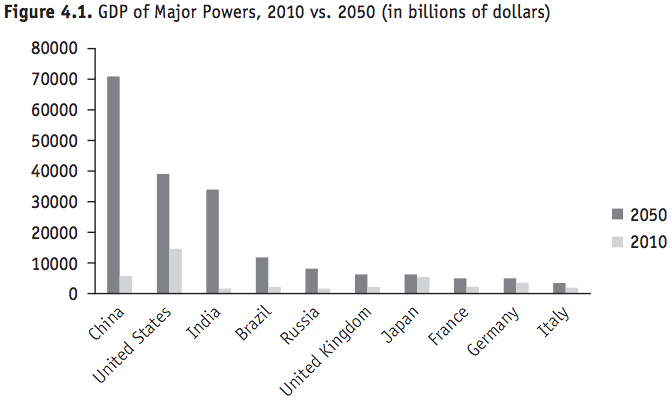
Our Journey - Indian Air Force: Touch The Sky With Glory
https://indianairforce.nic.in › history-timelineThe Indian Air Force was officially established on 8 October 1932. Its first ac flight came into being on 01 Apr 1933 with six RAF-trained officers and 19 ...
Star trek on a shoestring | India News [Indian rocket 1962 onwards
8 hours ago — From humble beginnings at a church, India's space programme now b oasts of one of the largest fleets of comm unication and remote sensing ...
The Economic Times - 7 days ago

THEN WE CARRIED WHITE MEN AND WOMEN ON RICKSHAWS
NOW we carry satellites,of Brit:/Amer:/Euro:....
I AM HAPPY INDIA IS NOW 3 RD IN WORLD-ON THE WAY UP{1943- 2022}
MUST PINCH MYSELF TO BELIEVE ;THIS IS NOT A DREAM BUT REAL
I NEVER THOUGHT WHEN I SUFFERED UNDER MONSTER WINSTON CHURCHILL'S FAMINE 1943
THAT INDIA WILL BE SO GREAT IN 2022
Our Journey - Indian Air Force: Touch The Sky With Glory
https://indianairforce.nic.in › history-timeline
STEAM Traction Engines used to Build the Raj Path-NEPAL
Raj Path. It was the first road built into Nepal in 1953. Before that time you could not drive into Nepal, it was cut off from the outside world. The road was constructed by the Indian Government using Steam Traction Engine,
WHEN POOR INDIA 1958- COULD NOT AFFORD TO BUY MACHINES
Synopsis : Conceived primarily as a measure of flood protection, the HirakudProject is a momentous step forward in bringing ...601K views 10 years ago those days India didnot have money to buy machines so used American army donated army trucks (used in Manipur and Naga land
to defeat Japanese army in 1945) (CAN BE SEEN IN THE VIDEO AT 3.51 ON THE ROAD SIDE WITHOUT ENGINES)
1948 INTERNATIONAL TRUCK FROM AMERICA-MAINLY
SECOND WORLD WAR LEFT OVER; ABANDONED IN INDIA
Now giant dumper made in India
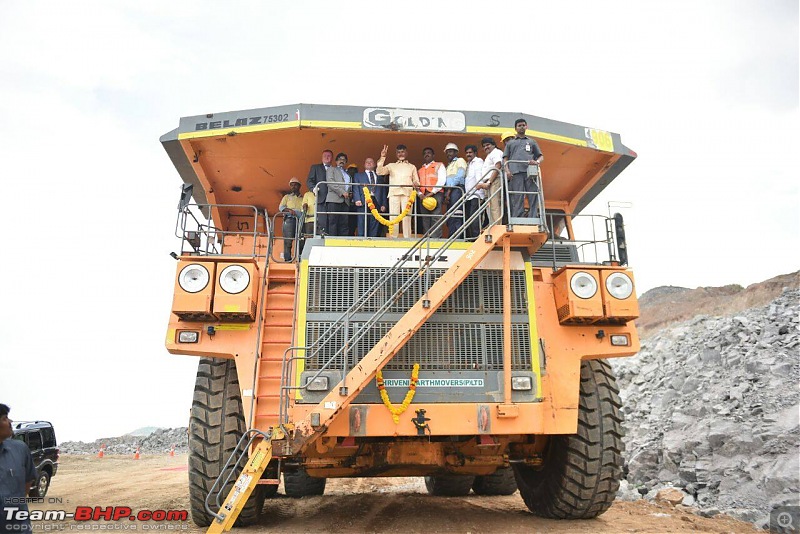
WHEN INDIA WAS POOR -NO MONEY TO BUY EVEN TRUCKS TO CARRY ROCKETS
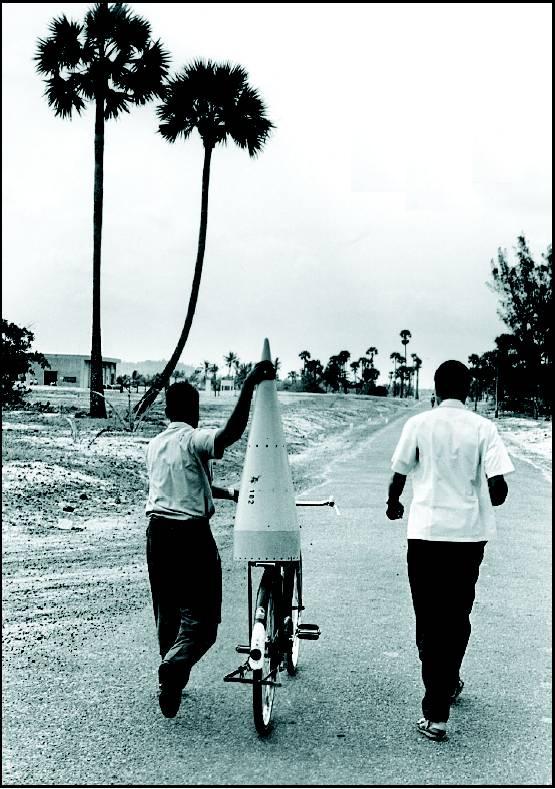
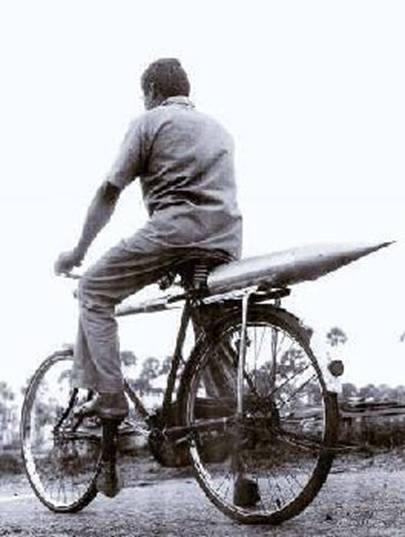
Scientists travelled daily from Thiruvananthapuram in buses, carrying lunch bought at the railway station. Many rocket parts were carried by the scientists on bicycles from one place to another within the sprawling range of Thumba.
NOW:-
to defeat Japanese army in 1945) (CAN BE SEEN IN THE VIDEO AT 3.51 ON THE ROAD SIDE WITHOUT ENGINES)
SECOND WORLD WAR LEFT OVER; ABANDONED IN INDIA
Now giant dumper made in India

WHEN INDIA WAS POOR -NO MONEY TO BUY EVEN TRUCKS TO CARRY ROCKETS


Scientists travelled daily from Thiruvananthapuram in buses, carrying lunch bought at the railway station. Many rocket parts were carried by the scientists on bicycles from one place to another within the sprawling range of Thumba.
NOW:-
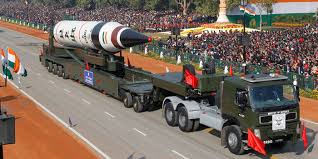
India Intercontinental Missile Test of ...businessinsider.com
Star trek on a shoestring | India News [Indian rocket 1962 onwards
8 hours ago — From humble beginnings at a church, India's space programme now b oasts of one of the largest fleets of comm unication and remote sensing ...

....................................................................................................................... THEN and NOW India's progress
MGR medical treatment from Apollo Chennai to brooklyn newyork
Critically ill Bengaluru woman flown from US to Chennai in 26 ...
for a “mild asthma attack with fever and cold” ...
...........................................................................................................................
A list released by a US-based top Indian diaspora organisation recently revealed that a group of 58 Indian-origin executives are heading some of the biggest private companies in the world. These executives collectively employ more than 3.6 million people and account for a combined $1 trillion in revenue and $4 trillion in market capitalisation.
“Great nations are not built on borrowed technology.” –
Vijay Bhatkar, the Father of Indian Supercomputers.
How India’s First Indigenous Supercomputer Amazed the World in 1991:- click and read
